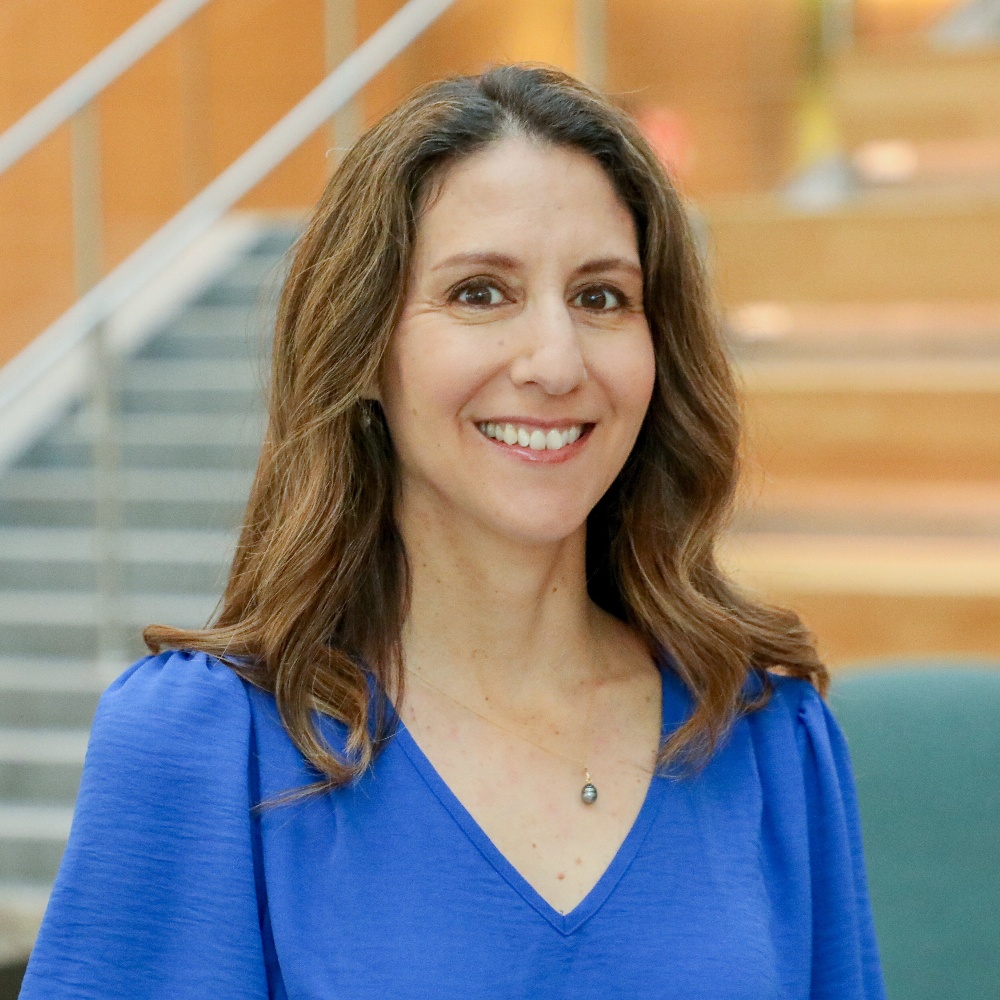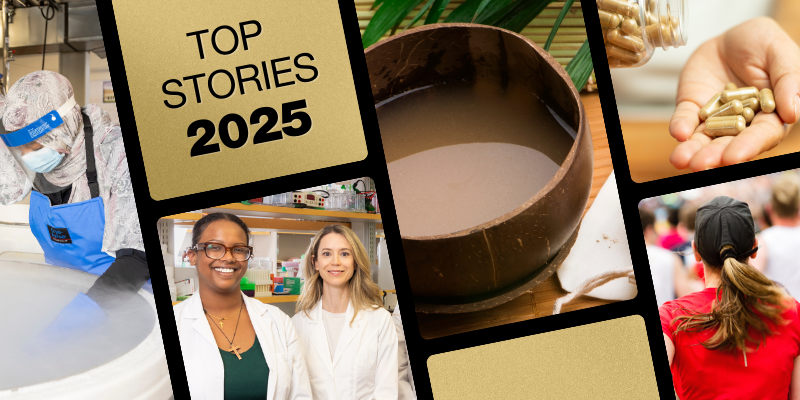To uncover major scientific findings, such as a novel way to treat cancer or a new understanding of the body’s immune system, research leaders in the University of Colorado Department of Medicine highlighted the value of collaborating with scientists across disciplines — an approach called “team science.”
Leukemia researcher Craig Jordan, PhD, and immunologist Beth Tamburini, PhD, who are both leading collaborative research initiatives supported by CU, detailed their progress and offered advice to other investigators during the department’s latest Research Achievement Highlights (REACH) forum.
Jordan and Tamburini’s research groups have each received a CU Anschutz School of Medicine Programmatic Incubator for Research (CU ASPIRE) Program Team Award. This award supports collaborations between investigators across campus who aim to submit a program project or other large multi-investigator grant proposal to an external funding agency.
“Team science is really important for areas of research that are not well studied,” Tamburini said, underscoring the value of these partnerships. “It increases the depth of the research area.”
Finding ways to eradicate leukemia stem cells
Jordan, head of the CU Division of Hematology, has spent more than two decades developing better treatments for acute myeloid leukemia, an aggressive cancer that forms in the developing blood cells of bone marrow. A primary focus is targeting leukemia stem cells because they can cause myeloid disease.
“The therapies we have now do not effectively eradicate the cancer at the root stem cell level, leading to disease progression,” Jordan said.
Even with treatments like intensive induction chemotherapy or targeted therapies, some leukemia stem cells can be left behind in patients and lead to the cancer returning. Studies have shown there can be different subtypes of leukemia stem cells in a patient, creating another challenge.
“We have to kill all the leukemia stem cells,” Jordan said. “It begs the question: Is there one approach or one set of approaches we can take that will effectively eradicate all of the leukemia stem cells? I think that’s the only way we’re going to make a meaningful impact.”
Jordan’s research team, which received a CU ASPIRE Program Team Award in 2023, decided to target the metabolic vulnerabilities of leukemia stem cells as a way to eradicate them.
Next year, the team plans to apply for a research program project grant, called a P01, through the National Cancer Institute Division of Cancer Treatment and Diagnosis Developmental Therapeutics Program to test several different methods of targeting these metabolic vulnerabilities.
Although a research program project grant allows a team of investigators to pursue different projects, Jordan said it is critical that all the projects be unified in an overall goal.
“The key is to have a central thread and aim that you build your projects around, as opposed to trying to group together individual projects,” he said. “Each project of ours will inform the other projects, and there is a strong thematic and scientific synergy.”
Uncovering how certain cells affect the immune system
Hoping to better understand the relationship between the body’s immune system and lymph node stromal cells, Tamburini is researching how lymph node stromal cells communicate with immune cells to encourage a proper immune response. These cells are essential to the structure and function of lymph nodes, which are part of the body’s immune system.
“There are many different types of immune cells within the lymph node and within the body, and many of these are well studied. But the structural cells with which immune cells interact were not very well studied,” said Tamburini, an associate professor in the CU Division of Gastroenterology and Hepatology.
Tamburini has dedicated years to researching these cells and how they affect the body’s immune system — but she knew this work was something she could not do alone. She teamed up with other experts and formed a collaborative research group that received a CU ASPIRE Program Team Award in 2022.
“We really felt we could develop projects that synergize together to develop a better understanding of the unique roles of these lymph node stromal cells in programming immunity and in response to infection,” she said.
When Tamburini and her team received the 2022 award, they had several different collaborative projects they wanted to pursue to support their overall mission of understanding the mechanisms of immune protection and pathology by lymph node stromal cells.
“Historically, lymph node stromal cells have been known to provide structural support for immune cell trafficking. They’ve also been shown to facilitate immune cell communication and control of local infection,” she said.
Several focus areas for the team included defining the different interactions between these cells and immune responses, understanding how viruses use these cells to prevent immune responses, and developing and applying the latest molecular tools to better understand these cells and their function.
Her team is also preparing to apply for a research program project grant through the National Institute of Allergy and Infectious Diseases.
“Together, these projects really strengthen the synergy of the program,” Tamburini said.
The value of team science
When it comes to partnering with other investigators, Tamburini explained it is important to ensure everyone is collaborating in a positive way.
Jordan agreed, saying, “Aside from having good science, you have to have a team that effectively works together.”
He added that in a research team, the independent projects should be able to stand alone and each test a unique hypothesis; however, they must still be interconnected to the other projects and support the team’s overall hypothesis.
The most rewarding aspect of team science for Tamburini is when the investigators get to brainstorm with one another, which she said fuels her work and drives her to do more.
“Because we are established investigators who are trained in critical thinking, it really increases the depth of what we’re studying when we come together and focus on this one project,” Tamburini said. “Team science is so exciting, and it’s fun to participate in a program like this.”





